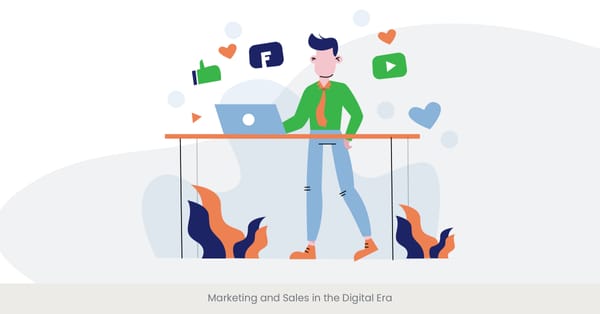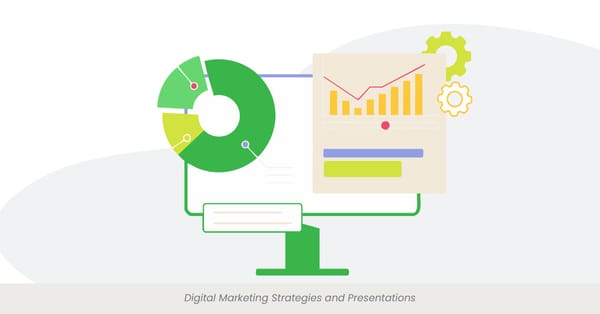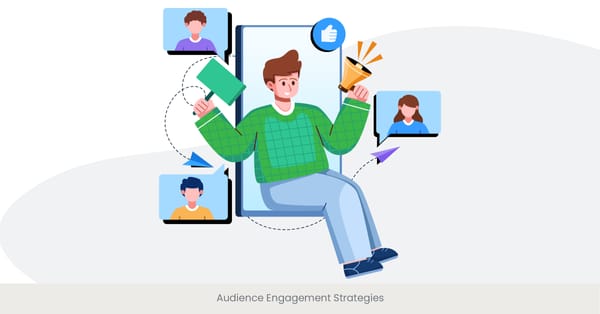
Understanding Marketing Presentation Objectives
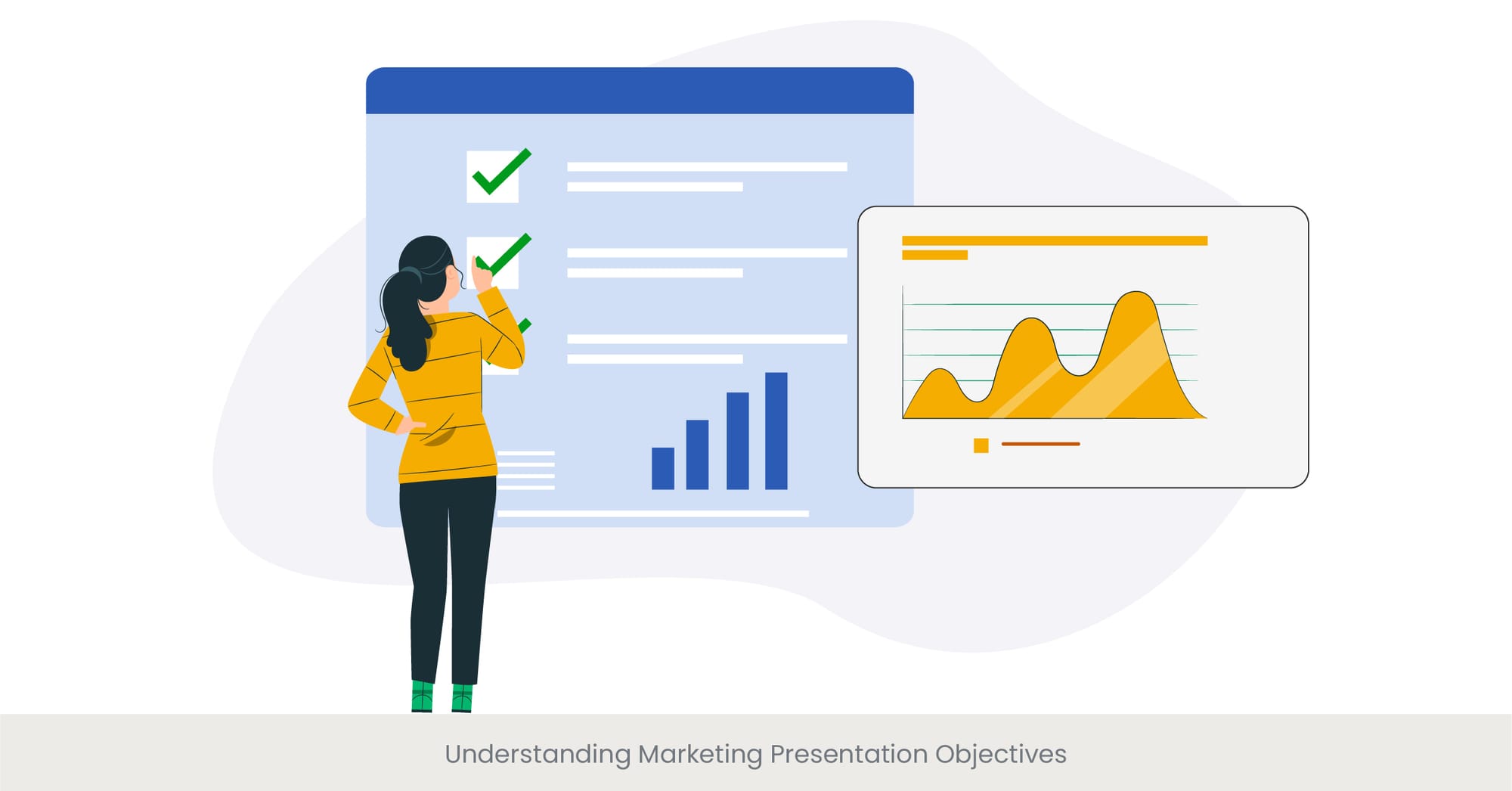
Unlocking the Power of Purpose-Driven Marketing Presentations
In the dynamic world of marketing, the creation of a presentation goes beyond merely assembling slides; it's about crafting a compelling narrative that resonates with your audience. Understanding the objectives of a marketing presentation is the cornerstone upon which successful marketing strategies are built. At its core, a marketing presentation aims to inform, persuade, and engage potential clients or stakeholders about the value and unique selling propositions of a product, service, or brand. By setting clear objectives, marketers can tailor their presentations to meet the specific needs and interests of their audience, ensuring that their message is not just heard but felt and remembered.
Laying the Foundation with Strategic Insights
Before diving into the creative process, it's essential to have a deep understanding of what you aim to achieve with your marketing presentation. This involves a strategic alignment with your overall marketing plan and goals, whether it's generating leads, driving sales, enhancing brand awareness, or establishing thought leadership. The right tools, such as Google Slides customizations for marketing teams, allow you to incorporate design elements that reflect your presentation's objectives, helping you convey your message more effectively. Delving into the historical context and the evolution of marketing presentations reveals a shift towards more interactive, audience-centric approaches. The incorporation of storytelling, audience engagement techniques, and data-driven insights has become integral in crafting presentations that not only convey information but also inspire action.
Bringing Objectives to Life Through Real-World Applications
Examining real-world examples highlights the effectiveness of well-defined objectives in marketing presentations. Take, for instance, a startup that leveraged its marketing presentation to secure venture capital by succinctly demonstrating the market need, the uniqueness of its solution, and its business model's scalability. Another example is a B2B company that utilized its marketing presentation to illustrate its understanding of the client's pain points, effectively showcasing its product as the solution, thereby cementing a long-term partnership. These examples underscore the importance of aligning your presentation's objectives with your audience's expectations and needs, thereby creating a powerful tool for achieving your marketing goals.
Evidencing Success Through Data and Expert Opinions
The significance of setting clear objectives for your marketing presentation is further underscored by numerous studies and expert opinions. Research conducted by the Marketing Science Institute emphasized the positive correlation between presentations tailored to specific audience needs and higher engagement and conversion rates. Additionally, marketing experts advocate for the integration of persuasive storytelling and visually appealing data visualization to amplify the impact of your presentation. Incorporating statistics, testimonials, and case studies can not only validate your message but also make it more relatable and convincing to your audience. As you embark on creating your marketing presentation, remember that a well-defined objective is your blueprint for success.
Audience Analysis for Targeted Presentations

Decoding Your Audience: The First Step to Presentation Success
The essence of a successful marketing presentation lies not just in the message, but in the understanding of whom that message is intended for. Audience analysis in marketing deck stands as the critical process of dissecting the demographic, psychographic, and behavioral attributes of your presentation's intended audience. This meticulous analysis is not an exercise in data collection but a strategic approach to tailor your marketing presentation in a way that speaks directly to the audience's needs, preferences, and pain points. By identifying who your audience is, their challenges, and what solutions they are seeking, you can craft a marketing presentation that resonates on a deeper level, increasing the likelihood of engagement and conversion.
The Foundation of Insightful Audience Analysis
At the heart of audience analysis is the gathering of key information that allows you to create a detailed profile of your target market. This involves a mix of quantitative and qualitative research methods, from surveys and social media analytics to in-depth interviews and focus groups. Understanding the historical evolution of audience analysis sheds light on how this practice has become more sophisticated over time, moving from broad demographic categorizations to intricate, persona-based strategies. Today, effective audience analysis incorporates a multi-dimensional view of potential customers, considering factors such as lifestyle, values, and online behavior, thereby enabling marketers to create highly personalized marketing presentations.
Real-World Examples: The Power of Precision
The impact of thorough audience analysis is best illustrated through real-world examples where targeted presentations have led to remarkable outcomes. Consider a tech company that segmented its audience based on business size and industry, leading to a presentation that addressed specific technological challenges and solutions, resulting in a significant uptick in B2B engagements. Another example is a consumer goods brand that tailored its presentation to highlight sustainability practices, appealing to eco-conscious consumers and sparking a notable increase in brand loyalty. These instances demonstrate how an in-depth understanding of your audience can transform a generic presentation into a powerful tool for connection and persuasion.
Strengthening Your Approach with Expert Insights
The importance of audience analysis in crafting targeted marketing presentations is well-documented in marketing literature and expert commentary. Studies have shown that presentations customized to the audience's specific interests and needs can dramatically improve engagement rates and the effectiveness of the marketing message. Industry leaders emphasize this point out the need for ongoing audience research to keep up with evolving consumer preferences and market dynamics. By integrating data-driven insights and expert recommendations into your audience analysis process, you can ensure that your marketing presentations are not only relevant but also compelling to those you aim to reach.
Crafting Key Messages for Marketing Presentations

The Art of Distillation: Creating Impactful Messages
Crafting the key messages for your marketing presentation is akin to distilling the essence of your brand, product, or service into concise, powerful statements that capture the attention and imagination of your audience. This critical process involves sifting through the myriad of features, benefits, and value propositions to highlight what truly matters to your target audience. Key messages serve as the cornerstone of your marketing presentation, ensuring that every slide, every visual, and every word aligns with and reinforces these central themes. By focusing on clarity, relevance, and impact, you create a narrative that not only informs but also inspires and persuades.
Navigating the Landscape of Messaging
Understanding the evolution of marketing messages from broad, one-size-fits-all statements to personalized, value-driven narratives provides insight into the importance of crafting messages that resonate on a personal level. The background of key messaging lies in the understanding of consumer psychology and market dynamics, necessitating a deep dive into how to explain how your business or offering solves specific problems or enhances the lives of your audience. This background knowledge is vital for creating messages that are not just heard but felt, ensuring that your presentation makes a lasting impression.
Illustrating Success Through Case Studies
Real-world examples serve as a beacon for the potential impact of well-crafted key messages in marketing presentations. Consider the case of a startup that articulated its unique value proposition with such clarity and relevance that it captured the interest of investors, leading to significant funding and market entry. Another example is a retail brand that effectively communicated its commitment to sustainability and ethical practices, resonating with a broad audience and resulting in increased brand loyalty and sales. These examples underscore the power of key messages to not only convey information but also to connect emotionally and drive action.
Empowered by Evidence: The Role of Research and Data
The crafting of key messages is further validated by research and data, which underscore the effectiveness of strategic communication in marketing presentations. Studies highlight the increased recall and persuasion rates associated with presentations that utilize clear, concise, and audience-relevant messages. Marketing experts emphasize the importance of aligning key messages with the brand's overall narrative and values, ensuring consistency and authenticity. Incorporating statistics, quotes from industry leaders, and consumer insights can enhance the credibility and appeal of your key messages, making your marketing presentation not just a collection of slides, but a compelling story that moves your audience to action.
Using Visuals to Enhance Your Message

The Power of Visual Storytelling in Marketing
In the realm of marketing presentations, visuals play a pivotal role in enhancing and amplifying the core message. The adage "a picture is worth a thousand words" holds especially true here, as well-crafted visuals can convey complex information succinctly, evoke emotions, and foster a stronger connection with the audience. This section delves into the strategic use of visuals—be it images, engaging infographics for marketing presentations, charts, or videos—to complement and reinforce key messages, making them more memorable and impactful. Incorporating visuals not only grabs attention but also aids in the retention of information, turning your marketing presentation into an engaging and persuasive narrative.
The Evolution of Visual Communication
Tracing the evolution of visual communication within marketing presentations reveals a shift from overloaded slides and generic stock photos to clean, impactful imagery and bespoke design elements that reflect the brand's identity. This transformation underscores the importance of quality over quantity and relevance over filler. Understanding the principles of design and visual storytelling becomes crucial, as it allows marketers to select visuals that resonate with their message and audience. Background information on color psychology, composition, and visual trends can provide valuable insights into creating compelling visual narratives.
Real-World Impact: Visuals in Action
Examining case studies where visuals have significantly enhanced marketing presentations illustrates the transformative power of visual storytelling. For instance, a tech company used a series of engaging infographics for marketing presentations to simplify complex data, resulting in a clearer understanding of their product's benefits and a notable increase in investor interest. Another example is a non-profit organization that utilized emotionally resonant imagery in its presentations to highlight the urgency of its cause, driving a spike in donations and volunteer sign-ups. These examples showcase how the strategic use of visuals can elevate your presentation from informative to unforgettable.
Empirical Support: The Science Behind Visuals
The effectiveness of incorporating visuals in marketing presentations is supported by a wealth of research and expert analysis. Studies indicate that audiences are more likely to engage with and remember information that is presented visually, with retention rates significantly higher for visual information compared to text alone. Marketing experts advocate for a balanced approach, where visuals complement the text without overwhelming it, ensuring that the presentation remains focused and effective. By leveraging the latest findings in visual cognition and design, marketers can create presentations that not only inform but also inspire and persuade.
The Power of Narrative in Marketing
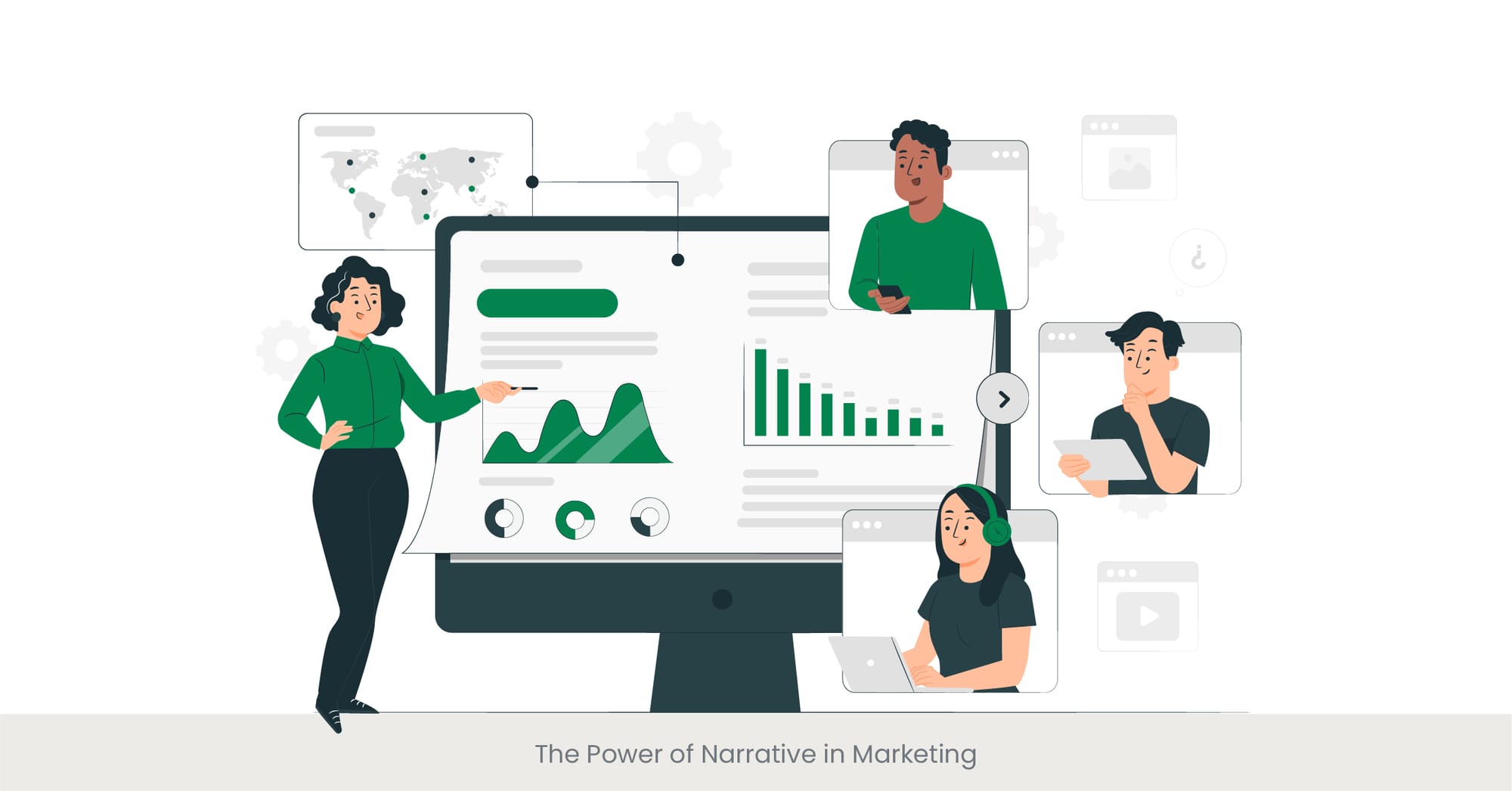
Weaving Stories into Marketing Magic
At the heart of every memorable marketing presentation lies a compelling narrative. Storytelling in marketing goes beyond simple product descriptions or service offerings; it's about connecting on a human level, weaving a story that resonates with the audience's desires, challenges, and aspirations. This section delves into the transformative power of narrative, highlighting how stories can encapsulate key messages, values, and the essence of the brand in a way that facts and figures alone cannot. By strategically crafting a narrative arc within your marketing presentations, you can lead your audience on a journey that not only informs but also entertains and inspires, creating a lasting emotional bond with your brand.
Narrative's Evolution in Marketing Communications
The use of narrative in marketing has evolved from straightforward product-centric pitches to complex, emotion-driven stories that reflect the audience's experiences and the broader social context. This evolution underscores the shift towards more authentic, relatable marketing practices that prioritize customer engagement and loyalty. Understanding the historical context and development of storytelling techniques in marketing provides valuable insights into creating narratives that are both impactful and relevant. It's not just about telling any story—it's about telling your audience's story, where your brand plays a pivotal role in their journey.
Spotlight on Success: Narrative in Practice
The impact of a well-crafted narrative is best demonstrated through real-world success stories. For instance, a lifestyle brand that shared customer journeys and experiences in its various marketing materials and presentations saw a significant increase in engagement and brand affinity. Another example is a technology firm that used storytelling to demystify its products, illustrating their application in everyday life, which enhanced customer understanding and boosted sales. These case studies reveal the potency of narrative in making abstract concepts tangible and in humanizing brands, thereby fostering deeper connections with the audience.
Narrative's Impact: Backed by Research
The effectiveness of narrative in marketing presentations is not just anecdotal; it's backed by research. Studies have shown that storytelling can significantly increase recall, persuasiveness, and emotional engagement compared to presentations laden with facts and statistics alone. Experts in marketing psychology emphasize the role of narrative in bridging the gap between the brand and its audience, suggesting that stories can serve as a powerful tool for conveying complex information in an accessible and engaging manner. Incorporating testimonials, customer stories, and brand history can enrich your marketing presentations, making your message not only heard but truly felt.
Incorporating Social Proof and Testimonials

Leveraging the Voice of the Customer
In the digital age, where consumer opinions and experiences are more accessible than ever, incorporating social proof and testimonials into Google Slides customizations for marketing teams has emerged as a powerful marketing strategy used to build trust and credibility. Social proof, in the form of customer testimonials, reviews, and case studies, acts as a persuasive element, validating the claims made about a product or service through the experiences of others. This section explores how effectively integrating social proof into your sales presentation rehearsal tools and tips can significantly influence decision-making, encouraging potential clients or customers to take the desired action by showcasing real-world applications and satisfaction.
The Evolution of Consumer Trust
The concept of social proof has long been a staple in marketing and sales strategies, evolving from word-of-mouth recommendations to a broad range of digital formats, including online reviews, influencer endorsements, and user-generated content. Understanding this evolution is crucial for marketers looking to harness the power of social proof in today’s context. It’s not just about presenting testimonials; it’s about showcasing them in a way that resonates with the modern consumer, who is increasingly skeptical of advertising claims and seeks validation from peers and trusted sources. When working with engaging infographics for marketing presentations, these testimonials should be seamlessly integrated to reinforce the overall message.
Real-World Examples: Social Proof in Action
The effectiveness of social proof is illustrated through numerous success stories across industries. A tech company, for example, boosted its conversion rates by prominently featuring user testimonials, tips, and case studies in its sales presentation rehearsal tools and tips, directly addressing potential customers' pain points and how their product provided a solution. Similarly, a health and wellness brand integrated video testimonials and tips from satisfied customers into its presentations, lending a personal touch that significantly enhanced the brand’s authenticity and appeal. These examples underscore the importance of selecting and presenting social proof that aligns with your audience's expectations and needs, making your marketing presentation more persuasive and relatable.
Empirical Validation: The Science Behind Social Proof
The impact of incorporating social proof in Google Slides customizations for marketing teams is supported by psychological research, which suggests that people are more likely to engage in behaviors or adopt beliefs that they perceive as being validated by others. Studies have shown that testimonials and reviews can dramatically affect perceptions of trustworthiness and quality of services, making them a critical component of effective marketing presentations. By carefully curating and presenting social proof, marketers can create a compelling narrative that not only highlights the benefits of their offering but also demonstrates its real-world effectiveness and value.
Learn More About Our Customized Marketing Presentation Solutions
Aligning Presentations with Brand Identity

Crafting a Cohesive Brand Narrative
In the competitive landscape of marketing, ensuring that your presentations align with your brand identity is not just important—it's imperative. This alignment is about more than just using consistent logos and color schemes; it's about weaving the essence of your brand into every aspect of your Google Slides customizations for marketing teams to create a cohesive and memorable brand narrative. This section examines how to effectively integrate your brand's values, tone, and personality into your marketing presentations, thereby reinforcing brand recognition and fostering a deeper connection with your audience. By embedding your brand identity into your presentation, you ensure that every slide, every image, and every word speaks directly to what your brand stands for, making your marketing efforts more impactful and resonant.
The Evolution of Branding in Presentations
Over time, the role of brand identity in marketing presentations has evolved from mere aesthetic consideration to a strategic component of storytelling and audience engagement. Historically, branding was often limited to surface-level elements, but today's marketers understand the importance of a deeper integration, where brand identity informs not just design choices but also content, messaging, and the overall narrative. This evolution reflects a broader understanding of branding as a means of building emotional connections and trust with the audience, underscoring the necessity of consistency and authenticity in every brand touchpoint, including sales presentation rehearsal tools and tips.
Success Stories: Brand Identity in Practice
Real-world examples abound of companies successfully aligning their marketing presentations with their brand identity to achieve remarkable results. A notable instance is a fashion retailer that used its distinctive brand voice and aesthetic to craft presentations for a new line, resulting in a campaign that felt unmistakably on-brand and deeply engaged its target audience. Another example is a tech company whose presentations are renowned for their minimalist design and focus on innovation, mirroring the company's brand identity and reinforcing its position as a leader in the industry. These cases illustrate how a well-aligned presentation can amplify brand messaging, enhance customer loyalty, and differentiate a company in a crowded market, a strategy that is often enhanced through the use of engaging infographics for marketing presentations.
Backed by Insights: The Importance of Brand Consistency
The critical role of aligning marketing presentations with brand identity is backed by marketing research and expert opinion, which consistently highlight the importance of brand consistency across marketing decks across all channels and touchpoints. Studies show that consistent brand presentation across different platforms can increase revenue by up to 23%, emphasizing the economic value of a cohesive brand narrative. Moreover, branding experts argue that in an era of information overload, a strong, consistent brand identity in your marketing presentations can make the difference between being remembered and being overlooked. By leveraging your brand's unique elements in different ways across your presentations, you can create a powerful and cohesive message that resonates with your audience and stands the test of time.
Transform Your Presentations with INK PPT’s Expertise
Call to Actions that Convert

Mobilizing Audiences with Effective Calls to Action
The culmination of a compelling marketing presentation often rests on a powerful Call to Action (CTA). A well-crafted CTA is not just a directive; it's an invitation to engage, a prompt that encourages the audience to take a step further—be it making a purchase, signing up for more information, or joining a community. This section explores the art and science of creating CTAs that resonate with the audience, driving them towards meaningful interaction with your brand. Effective CTAs are clear, concise, and aligned with the audience's needs and motivations, seamlessly integrating into the narrative of the presentation to guide the audience toward the desired outcome. Whether you're using speaker support materials for conferences or delivering an in-person presentation, CTAs should drive action effectively.
Evolution and Strategy Behind CTAs
Historically, CTAs were straightforward and often generic, but as the marketing landscape has evolved, so too have the strategies behind effective calls to action. Today, marketers employ a variety of techniques, from urgency and exclusivity to empathy and benefit-driven messaging, to craft CTAs that are more than just commands—they are compelling reasons for an audience to act. Understanding the psychology behind why people make decisions and how they respond to different types of messaging is crucial for designing CTAs that convert. By analyzing successful CTAs from the past and present, marketers can glean insights into what resonates with their target audience, adapting their strategies to the digital age where attention spans are short and competition is fierce.
Illustrating Success: CTAs That Made a Difference
The impact of a well-designed CTA can be seen in numerous success stories across various industries. For instance, an e-commerce brand significantly increased its conversion rate by optimizing its CTA, making it more prominent and aligning it with a clear value proposition that spoke directly to the customer's pain points. Another example is a non-profit organization that, by tweaking its CTA to focus on the impact of a donor's contribution rather than the act of donation itself, saw a remarkable increase in engagement and funds raised. These examples highlight the importance of testing and refining CTAs to discover what truly motivates your audience to take action. The use of event-ready sales presentation creators can further amplify the impact of these CTAs, ensuring they're visible and effective during live presentations.
Empirical Support: The Efficacy of Strategic CTAs
Research in the fields of marketing and behavioral psychology supports the critical role of effective CTAs in influencing audience behavior. Studies have shown that personalized and action-oriented CTAs can lead to significantly higher conversion rates compared to generic or passive ones. Marketing experts emphasize the importance of clarity, urgency, and relevance in crafting CTAs, suggesting that a strong CTA should not only prompt action but also resonate with the audience's desires and needs. By incorporating these essential elements into your marketing presentations, you can create CTAs that not only stand out but also motivate your audience to move from passive listeners to active participants.
Get Inspired by Our Case Studies and Success Stories.
Leveraging Multimedia in Marketing Presentations
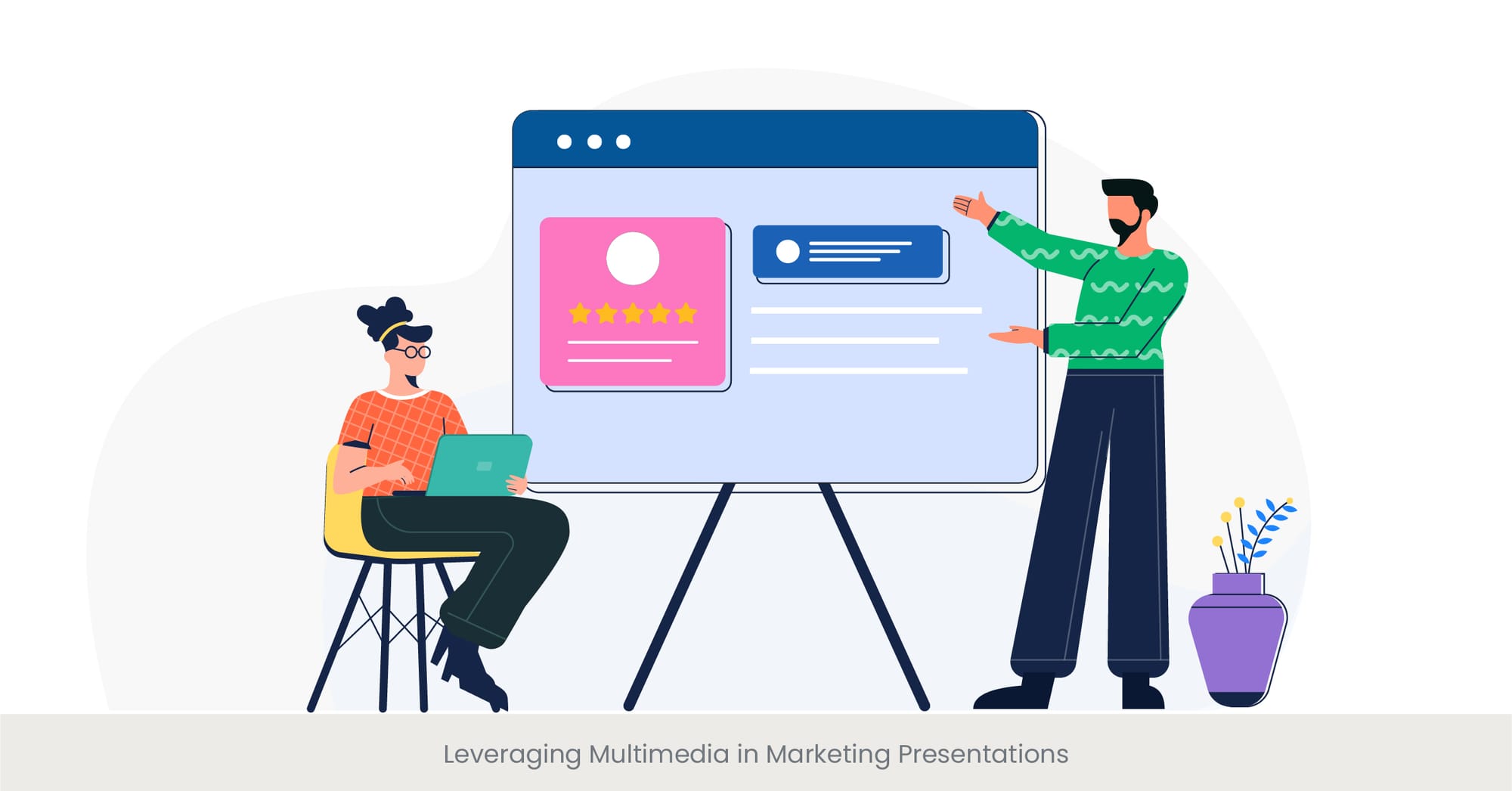
Enhancing Engagement through Multimedia Elements
In today's full digital marketing landscape, multimedia elements such as videos, audio clips, animations, and interactive components are transforming the way marketers create and deliver presentations. Leveraging multimedia not only captivates the audience's attention but also enhances the comprehension and retention of information. This section explores the strategic incorporation of multimedia in marketing presentations to create a dynamic and immersive experience. By thoughtfully integrating various media forms, you can elevate your presentation from a static display of information to an engaging story that resonates with your audience on multiple levels. This is particularly effective when integrated with engaging infographics for marketing presentations to enhance message delivery.
The Evolution of Multimedia in Marketing
The use of multimedia in marketing presentations has evolved significantly, driven by technological advancements and changing consumer expectations. From the simple slide shows of the past to today’s interactive presentations that incorporate virtual reality (VR) and augmented reality (AR), the progression reflects a broader shift towards more engaging and experiential forms of communication. Understanding this evolution is key to leveraging multimedia effectively, as it provides insights into how different media can be used to enhance message delivery, foster emotional connections, and create memorable experiences, making it a perfect fit for speaker support materials for conferences and other professional settings.
Real-World Impact: Multimedia Success Stories
The effectiveness of multimedia in marketing presentations is evident in numerous success stories across a variety of industries. For instance, a tech company using a well-produced product demo video within its presentation saw a dramatic increase in user engagement and understanding of complex features. Another example is a travel agency that incorporated 360-degree videos of destinations into its marketing presentations, significantly boosting booking rates by offering immersive previews. These examples demonstrate how multimedia can be used not just to inform, but to inspire and persuade, making a compelling case for its integration into marketing strategies, particularly when utilizing event-ready sales presentation creators.
Supported by Research: The Benefits of Multimedia
The benefits of incorporating multimedia into marketing presentations are well-supported by research, which highlights its positive impact on audience engagement, information retention, and emotional response. Studies have shown that presentations incorporating videos and interactive elements can significantly increase the audience's attention span and facilitate a deeper understanding of the content. Marketing experts advocate for the strategic use of multimedia resources to break through the clutter, suggesting that varied content formats can cater to different learning styles and preferences, thereby broadening the appeal of your presentation. By embracing multimedia, you can create a more engaging and effective marketing presentation that stands out in a crowded marketplace.
Ready for Impactful Marketing Presentations?
Measuring Presentation Effectiveness

The Crucial Step of Evaluation
Understanding the impact of your marketing presentation is essential for continuous improvement and strategic refinement. Measuring presentation effectiveness involves assessing how well your presentation met its objectives, the level of audience engagement, and the conversion rates achieved. This section delves into the methodologies and tools that can be used to gather feedback, analyze performance, and determine the ROI of your marketing efforts. By establishing clear metrics for success and employing a variety of evaluation techniques, you can gain valuable insights into the strengths and weaknesses of your presentation, informing future strategies and adjustments.
Navigating Through Metrics and Feedback
The evolution of digital marketing tools and analytics has vastly improved the ability to measure presentation effectiveness. From simple audience surveys to advanced analytics platforms, the range of available methods reflects a growing emphasis on data-driven marketing. Understanding which metrics are most relevant to your presentation goals—be it audience engagement, lead generation, or direct sales—is key to effective measurement. This may include quantitative data like view counts, time spent on each slide, and conversion rates, as well as qualitative feedback from audience surveys and social media interactions. Together, these data points can provide a comprehensive view of your presentation's impact.
Success Stories: Metrics in Action
Real-world examples of successful measurement strategies highlight the value of this evaluative step. A B2B company, for example, implemented post-presentation surveys and found that tweaking the content based on feedback significantly increased its lead conversion rates for subsequent presentations. Another case involved a retailer that used analytics to track the viewer engagement with their online marketing presentation, leading to optimized content that doubled their online sales. These examples underscore the potential of effective measurement to transform marketing presentations into highly effective tools for achieving business goals.
Empirical Insights: The Science of Measurement
Research into presentation effectiveness emphasizes the importance of setting specific, measurable objectives beforehand and choosing the right tools to track these objectives post-presentation. Studies suggest that presentations with clear calls to action, followed by immediate opportunities for feedback or engagement, tend to have higher conversion rates. Marketing experts advocate for a balanced approach to measurement, combining hard data with human insights to get a fuller picture of a presentation's success. By systematically measuring the effectiveness of your marketing presentations, you can make informed decisions that enhance the impact of your future marketing initiatives.
Read Our Comprehensive Guides to Craft Better Presentations
Thanks for checking out our guide! If it resonated with you, please feel free to share it with others.
Want more guides, Check out these additional guides you may find interesting:
Interactive Techniques in Sales Presentations
Audience Engagement Strategies
FAQs on Creating Compelling Marketing Presentations
1. What is a marketing presentation?
A marketing presentation is a strategic tool used to communicate the value proposition of a product, service, or brand to a target audience. It aims to inform, persuade, and engage potential customers or stakeholders by showcasing the benefits, features, and competitive advantages of the various product works or offering.
2. How do you present in marketing?
Presenting in marketing involves crafting and selling a narrative that resonates with the audience, utilizing visuals and multimedia to enhance the message, and incorporating persuasive elements like social proof and a strong call to action. It's about connecting with the audience on an emotional level and providing clear reasons why your offering is the solution to their needs.
3. How do you organize a marketing presentation?
Organizing a marketing presentation effectively requires a clear structure that guides the audience through the narrative. Start with an introduction that sets the context, followed by the body where key messages, data, and visuals are presented. Conclude with a compelling call to action that prompts the audience to take the next step.
4. What is the role of marketing presentation?
The role of a marketing presentation or website is to effectively communicate the key benefits and values of a product or service, thereby influencing the decision-making process of the audience. It serves as a vital component in marketing strategies to build brand awareness, generate leads, and drive conversions.
5. What is a marketing deck?
A marketing deck is a concise, visually engaging presentation used to pitch and sell a business idea, product, or service to potential investors, clients, or partners. It highlights the core value proposition, market opportunity, and competitive advantages in a structured and persuasive manner.
6. What is a marketing card deck?
A marketing card deck or marketing decks, refers to a set of printed cards or digital slides that contain summarized information about a business's products, services, or key marketing messages. It's a creative and portable format for presenting marketing content in a more interactive and engaging way.
7. How do you make a marketing plan deck?
Creating a marketing plan deck involves outlining your marketing strategy, objectives, target audience analysis, proposed initiatives, budget, and expected outcomes. It should be visually appealing, data-driven, and concise, providing stakeholders and prospects with a clear understanding of the marketing plan and its anticipated impact.
8. What is digital marketing deck?
A digital marketing deck is a presentation focused on outlining a digital marketing strategy, including online advertising, social media campaigns, content marketing, SEO tactics, and analytics. It serves to inform and align team members or stakeholders on digital marketing efforts, resources and goals.
9. How do you structure a marketing presentation?
Structuring a marketing presentation involves an introduction to set the stage, a detailed exploration and overview of the marketing content—including objectives, strategies, and key messages—followed by a strong closing that reinforces the main points and includes a clear call to action.
10. How to create a marketing PowerPoint presentation?
To create a marketing PowerPoint presentation, start by defining your objectives and understanding your audience. Use a clean, branded template and include a mix of text, visuals, and multimedia to convey your message effectively. Keep slides concise, focused, and engaging, with a clear narrative throughout the slide deck.



%20(1).jpg)
%20(1).jpg)
